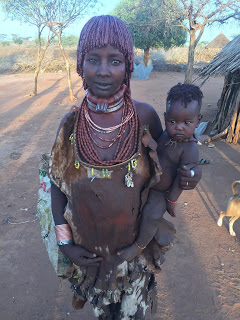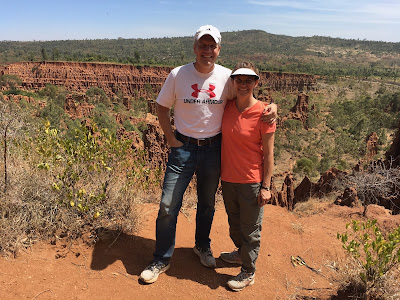We traveled to Rwanda to change out the leadership in the Kigali First Branch. Saturday was spent interviewing our missionaries, and then interviewing the men in the branch. On Sunday during church, the branch presidency was changed out, and the branch members were taught about how these men are called, and how to sustain the new leaders. It was a wonderful meeting, and the members were very supportive of the new Branch Presidency.
New Branch Presidency Kigali 1
Muyango Jimmy Mwesigye (1st councilor) Johan Tunwine (Branch President) Dady Paul Hakizimana (2nd councilor)
Branch members and investigators
We were able to see several tribes in a very short period of time, which was really nice. They are all unique, but many have similar looks and traditions. We learned about the traditions that they have had for centuries, and it was very interesting. None of them believe in God. They believe in nature and have their own customs and rituals.
We stayed in huts overlooking two lakes. It was a beautiful view.
They live in huts that are shaped like the head of an elephant.
They make bread from false banana trees. Basically they are banana trees that don't bear any fruit. They use the trunk of the tree and leaves to make food.
This woman is spinning cotton into thread by hand. I tried it... it was NOT easy.
The men use the thread to weave amazing fabrics.
At the market. Look at the tiny chair the man with the striped shirt is sitting on in the bottom left of the picture. Most men carry a chair like this and use it wherever they go. I thought it would be interesting to see Americans using these at soccer games instead of camp chairs.
This is the village of the Hamar tribe.
The hut is two stories, with 5 people sleeping on the main, and a low platform above where two or three more sleep.
The women use clay and butter to make their hair look this way. It feels like clay and butter... It doesn't harden, just remains greasy.
The large necklace on top with the metal thing sticking out (don't you love how I describe it?) shows that she is a first wife. This does not come off.
The two necklaces on the woman below show that she is a wife, but NOT the first.
The women drape a goat skin over them that is decorated with beads and shells.
They also drape a goat skin over them... sometimes.
Kara are well known for their body painting.
This young Kara man is holding a chair in his right hand, like the man in the market was sitting on. All of the tribesmen from most of the tribes we met have a tiny chair like this that they carry with them, and use throughout the day. They also put it under their neck to sleep on at night.
We bought one of our own to remind us of how blessed we are to have pillows to sleep on, and soft things to sit on.
The ladies and children of the Dassnche tribe gathered around and danced for us. All the men were out tending the cattle (this was the case in most of the tribes).
We had to cross the Omo river to get to the Dassanech Tribe. President Collings and Elder Phelps decided to ride in a traditional boat to cross to the other side.
This is a view of the Dassanech village.
And this is inside one of the huts. Those are dried pumpkins that they use for bowls and drinking. They sleep on the hide of cattle.
One of the most well known of the tribes we visited was the Mursi tribe. They are known for the clay plate placed in the bottom lip of the women. There are several stories about why they do this. The first story I heard was that this was done to protect the women. Other tribes would come kidnap their women, and this would deter them from wanting to take them. Another source says that they do this for beauty. But at this point it has been a tradition for so many generations, they just continue the tradition. The larger the plate, the more respected the woman is.
Young men from the Mursi tribe.
A woman with her lip plate out. They take them out to eat, and sleep. They remove the four bottom teeth and slowly over many years place larger and larger plates in their lip. They have no way to close their mouth completely, and have to tilt their head back and just pour water in when they want a drink.
We watched this woman make a clay pot with a lid from start to finish. Actually, it needs to bake in the sun for a couple of days and then she buries it in coals in the ground for a few more days, but she was amazing!
I got to try my hand at making enjeru (After watching an expert do it). It tasted so good!
Then we watched a blacksmith make a knife out of a piece of re-bar. He kept putting his bare hand in the hot coals and lifting them to the top of the pile of coals. I don't know how he didn't burn his hands!
He carved the handle and burned a design into it. President Collings was the lucky recipient of the knife.
Pretty stop on our way to the last tribe.
They call this place New York.
Each of the huts had what looked like a terracotta pot on top to hold it all in place.
We took a boat out on Lake Chamo, and we were able to see hippos. We weren't too excited about that because we have seen so many here in Africa, but then they took us to an island, and all along the shoreline were the biggest crocodiles I have ever seen!
Our travelling companions.
We counted at least 17 all out sunning on the beach. It was incredible.
My favorite person.
After seeing all the crocodiles, I don't think I would want to be on his boat. We actually saw many men in boats like this.
Our reason for going to Ethiopia was to make a change in the Branch Presidency of one of our mission branches, which is 5 hours South of Addis Ababa. We have had so many issues getting to this branch, it's incredible. Sometimes it feels like the Adversary is trying to stop us from doing our work there. We had planned to make the changes in November, but they had the political unrest in Debre Zeit, and issued a state of emergency, which wouldn't allow us to travel outside of Addis Ababa.
Things are finally settling down, and we had scheduled to fly from Arbraminch to Hawassa, and then the airplane would continue on to Addis Ababa. The first leg of the flight was only about 25 minutes. But as we were making our way to the airport, we received word that they did not plan to stop at Hawassa because there were only 5 people planning to get off. (We were those five) This meant that we would have to drive to Hawassa (a four hour drive) for President Collings to conduct the interviews for the perspective Branch Presidents. It was our only option. We started driving right away, and ended up making it just in time for the interviews.
These are pictures of the previous branch presidency members and their families.
All I can say is that we truly witnessed a miracle in this tiny branch. A new branch presidency was called, and the will of the Lord was revealed. The Spirit was very strong. I will post pictures of the new branch presidency later. We are praying that the saints in Hawassa will continue to grow and be a strong branch of the church.
I got to spend time with the relief society, and really have grown to love these women! We took turns reading from the book of Mormon and talking about what we read. Three different languages were spoken, but the Spirit was there as we talked about how the Savior atoned for each of us, and how Heavenly Father loves his children wherever they are. In this group we have one return missionary, and one, possibly two who are preparing for a mission. All these women have been baptized, and are converted to the church.
With the reorganization of the Hawassa Branch Presidency, this makes 3 new branch presidencies in three countries, in three weeks. It's been amazing to see that Heavenly Father is preparing righteous men to lead his church here in our mission, and throughout the world.










































